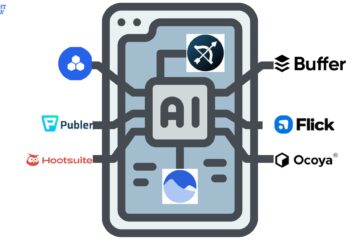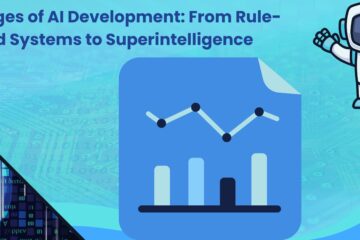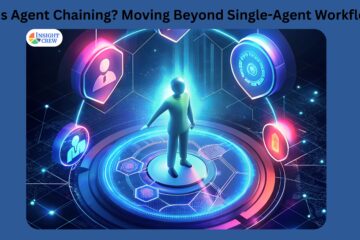Companies are always looking for fresh approaches to improve and optimise their processes. This is where AI chatbots come in; they are intelligent virtual assistants that communicate with users through artificial intelligence. These chatbots, which can be integrated into websites, apps, and social media platforms, are revolutionising the way businesses communicate with their clients and potential clients.
What Are AI Chatbots?
“AI chatbots” are software applications that simulate human conversation using artificial intelligence. They can communicate via text or voice and are often utilised in customer support, sales, and virtual assistant roles.
How AI Chatbots Work
AI chatbots use a combination of technologies:
- Natural Language Processing (NLP): Helps the bot understand, interpret, and generate human language.
- Machine Learning (ML): Enables the chatbot to improve its responses over time by learning from interactions.
- Intent Recognition: Determines what the user wants based on input.
- Entity Extraction: Identifies key data points, such as dates, names, or locations.
- Dialogue Management: Controls the flow of the conversation and determines how the bot responds.
Workflow:
- User Input: “Where is my order?”
- NLP Engine Processes Input: Recognises intent.
- Backend Query: Checks the order database.
- Response Generation: “Your order is on the way!”
- Output to User
Types of AI Chatbots
- Rule-Based Chatbots
- Use predefined rules or decision trees.
- Best for simple, repetitive tasks.
- No learning capability.
- AI-Powered Chatbots
- Use NLP and ML.
- Can handle more complex queries.
- Improve over time with data.
- Hybrid Chatbots
- Combine rule-based logic with AI.
- Offers a balance between structure and intelligence.
- Voice-Enabled Chatbots
- Interact through voice (e.g., Alexa, Google Assistant).
- Use Speech-to-Text and Text-to-Speech.
Benefits of AI Chatbots
- 24/7 Availability: Artificial intelligence chatbots, in contrast to humans, don’t require recharging to function continuously. This enables companies to be accessible around the clock to answer consumer questions.
- Scalability: Chatbots can communicate with hundreds or even thousands of users at once, in contrast to human agents who can only manage a very small number of chats at once. This makes sure that no client or potential client is overlooked and helps to maximise engagement during busy times.
- Cost Reduction: AI chatbots can help businesses save money by automating repetitive tasks. Businesses are able to better allocate resources and streamline operations as a result. Furthermore, chatbots can manage several conversations at once, negating the need for extra employees.
- Speed and Efficiency: Instant responses.
- Qualifying leads: By posing targeted questions based on the prospect’s needs, budget, and timeline, chatbots can automatically qualify leads without the need for human intervention. By enabling sales teams to concentrate their efforts on the most promising prospects, this greatly improves the efficiency of the sales process.
- Multilingual Support: Businesses can customise their approach to communicating with users from different regions who speak different languages because AI chatbots are software-based and can be easily programmed to speak multiple languages. Businesses can successfully overcome language barriers, reach a wider global audience, and enter new markets thanks to this capability.
How to Create an AI Chatbot
Step 1: Define Purpose and Scope
- What problem does the chatbot solve?
- What kind of interactions should it handle?
Step 2: Choose a Platform or Framework
- No-code/Low-code tools: Dialogflow, Chatfuel, ManyChat, Botpress.
- Custom-built using code: Python with libraries like Rasa, LangChain, or OpenAI’s API.
Step 3: Design Conversation Flow
- Use storyboards or flowcharts.
- Plan for edge cases and fallback responses.
Step 4: Integrate NLP Engine
- Google Dialogflow, Microsoft LUIS, or OpenAI GPT for natural language processing and conversation.
Step 5: Train the Chatbot
- Use example phrases to help the bot understand various inputs.
- Continuously test and improve.
Step 6: Connect Backend Services
- CRM, databases, APIs- to provide dynamic, real-time information.
Step 7: Deploy
- Web app, mobile app, messaging platforms (WhatsApp, Messenger, Slack, etc.)
Step 8: Monitor and Improve
- Analyse conversations.
- Retrain with new data.
Popular Tools & Technologies
- OpenAI (GPT Models): For advanced conversational bots.
- Rasa: Open-source framework for custom ML-powered bots.
- Dialogflow (Google): NLP engine for building bots with Google Cloud.
- Botpress: Open-source, developer-friendly.
- Microsoft Bot Framework: Enterprise-level bot development.
In conclusion, by improving speed, efficiency, and personalisation, AI chatbots are revolutionising how companies engage with their clientele. AI chatbots have enormous potential for enhancing customer service, automating lead generation and business expansion, or offering multilingual support. By selecting the appropriate platform.


